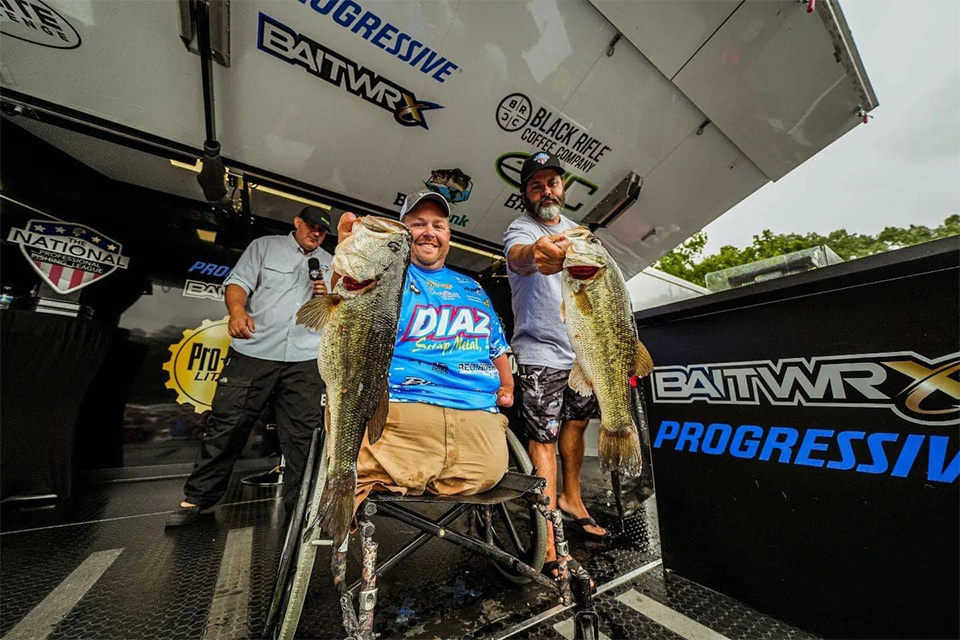Story by Hunter Baughman | Photos by Tanner & Travis Lyons
Exactly one week ago we were discussing how to visually catch spawning fish. Ironically, the last week has brought record rains for a large portion of the country. With lakes rising multiple feet and plenty of fresh mud pouring in, finding water stable and clear enough to sight fish is no longer an option. This is a great time to discuss ways to catch fish in quickly rising water.
There are two approaches to rising water. One: follow the rising water. Two: fish the old bank line.
The most common approach is following the water. When lots of fresh muddy water enters a lake, it will bring fresh oxygen with it. The bait will go to the fresh green leaves and the highly oxygenated water brings the bass with them. For this approach, there are many bait options. Flippin’ and pitching into thick cover when the sun is high is always a solid choice, though sometimes—on a large rise—the fish don’t relate to the bottom. They will hang higher in the water column under the cover. This is when a topwater, spinnerbait and swim jig really shine. These techniques can cover water quickly, increasing your odds for a bite.
If you continue to flip while the fish are high in the water column, a heavy weight will increase your bites. The rapid fall will cause a reaction strike as the bait goes past the fish.
The last way to follow the water is finding fresh water running into the lake. This is probably my favorite technique. Look for creeks running cleaner water into a muddy lake, culverts pouring water, or runoff in the backs of pockets. These are great ways to generate a large bite.
To wrap it up, if you decide to follow the rising water, determine where the fish are sitting in the water column and go from there.
The second approach is fishing the old water line. While lots of fish move up with rising water, there will be a population that do exactly what it sounds like. They will stay on the old water line on outside edges of bushes, points etc. The number of fish that don’t move up will increase on lakes that stay clear with the rising water.
A couple of techniques for this include dragging a Carolina rig or jig and throwing medium diving crankbaits. This approach isn’t too in depth as it’s the same thing you would do if the lake was at normal level—dragging on points and bluffs and throwing a crankbait on the outside edges of bushes.
Even though a high rising body of water can be intimidating, the fish are still there, and they still have to eat. I encourage you to not pass on a trip just because of high water. Go figure them out and have fun. And please be safe in turbulent waters!
We leave this weekend for Lake Norman. Next week’s column will be a practice report. Funny enough, it looks like they didn’t get the storms that far east, and the lake is a little low. I expect to target spawning and post spawn bass plus maybe a few on a shad spawn.
I’ll give you the details next week!
Hunter Baughman – Angler Profile





